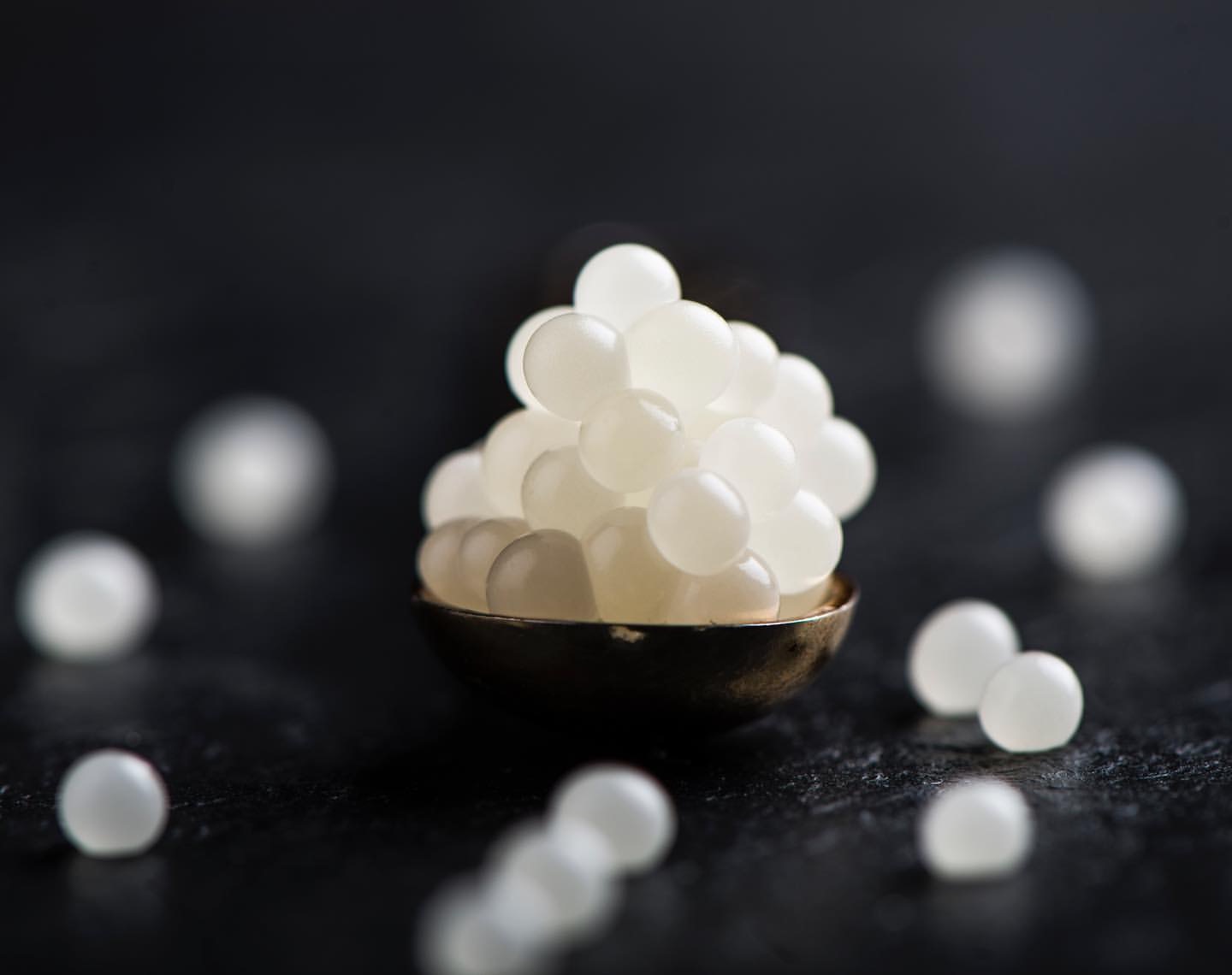What is White Caviar? | Escargot Roe Explained

So you've heard of "black caviar" and "red caviar" and you might have even heard about "white caviar" (most likely La Prairie skin care line..) but there's a particular "white caviar" gaining some traction in the culinary world right now ... What is it, you ask? Well, it's not from a White Sturgeon, or an albino sturgeon, it's not even from a fish... It's actually delicately collected from Escargot--that's right, SNAILS!
Where Does Escargot Caviar Come From?
These beautiful white gems aren't dyed or made synthetically like some other similar looking products. In fact the white pearl-like appearance of snail roe is 100% natural. White escargot caviar typically comes from one of the world's most common land snail species: Helix aspersa, the European garden snail (Cornu aspersum). Traditionally farmed for their meats, these delicious little French delicacies produce large eggs (3-4 mm in diameter), typically around the size of trout roe but with a firmer, silkier texture.
How Do They Harvest Eggs From A Snail?
Snails are hermaphroditic (they possess both genitalia) but still need a mate to become fertile and produce roe. They’re usually ready to lay their eggs 2 weeks after mating, but nature has provided them with the ability to hold their fertilized eggs for up to a year if they don’t feel safe and that the surrounding conditions are not ideal. This is the reason why they have to be so carefully tended to on the farm.
Snails can take up to 48 hours to dig a hole, crawl inside, lay their eggs (10-15 minutes apart), crawl back out, and cover up the hole. Snail farmers then collect each egg extremely gently, one by one. This can only be done by hand, resulting in a relatively high price for this labor intensive, rare product.
Each snail produces 100 eggs on average (which is equal to 4-5 grams). It can take 20-25 thousand eggs to produce 1 kilogram of caviar. The snail roe is inspected, cleaned and salted similarly to caviar, then vacuum packed and pasteurized to eliminate contaminants and maximize shelf-life.
 What does Snail Caviar Taste Like?
What does Snail Caviar Taste Like?
Snail eggs are best-known for their opaque and milky-white color, but the completely unique, earthy flavor trapped inside each grain is truly difficult to compare to any other food. On the palette, a firm pop is followed by earthy hints of moss and mushrooms. Like the escargot meat or other fish roes, white escargot caviar has an unmatched taste that may take several tries to fully appreciate. In addition to sampling direct from the tin, there are endless possibilities for chefs to play around white caviar and create dishes that are both tasty and aesthetically pleasing.
Serving White Caviar:
Coming from land dwelling mollusks, white escargot caviar maintains quality at higher temperature than caviar from fish. Snail roe should be stored chilled below 50°F, but given some time to warm up to room temperature before consuming.
White caviar is served similar to other caviars: on Russian pancakes, toasts, crunchy pancakes made of potatoes or zucchini, with créme fraîche, sprinkled with lemon juice. It tastes great on slices of scallops, sprinkled with lemon, a bit of olive with rosemary, pinch of salt and flaked lime peel. It can be a great decoration for various dishes, whatever the chef’s fantasy may be.
It is also a nice additive to chocolate and deserts or an appetizer with champagne or vodka.
It is not spread or mashed but delicately laid with a spoon, preferably made of nacre, turtle shell or gold.
White caviar is known in France as “caviar d’escargot“ and is becoming popular on the tables of London, Moscow, Emirates, Japan and USA.
Species: Helix Aspersa Muller
Nutritional Benefits:
White caviar is thought to help reduce development of heart diseases, prevent blood clots and improve blood flow. It's also known as an aphrodisiac.
The eggs include not only high protein content, unsaturated fatty acids, vitamins A, D and E and vitamins from group B, including folic acid, but most of all – exogenous amino acids which the human body is not able to synthesize independently. The eggs also contain lysine, leucine, isoleucine and valine. Snail caviar also includes cysteine which, apart from detoxicating the body, is necessary for synthesis of proteins, creatine and has high antioxidant features. As well, white caviar contains minerals – phosphorus, zinc, magnesium, iodine, silicon and many more. Calorific value of white caviar is only 31 kcal per 100 grams, making it slightly less caloric when compared to the nutritional value of traditional caviar.
If you're interested in learning more please contact us:
[email protected] | 1.888.268.8780
Sources: http://bogelgroup.com/about-us/



 (888) 268-8780
(888) 268-8780